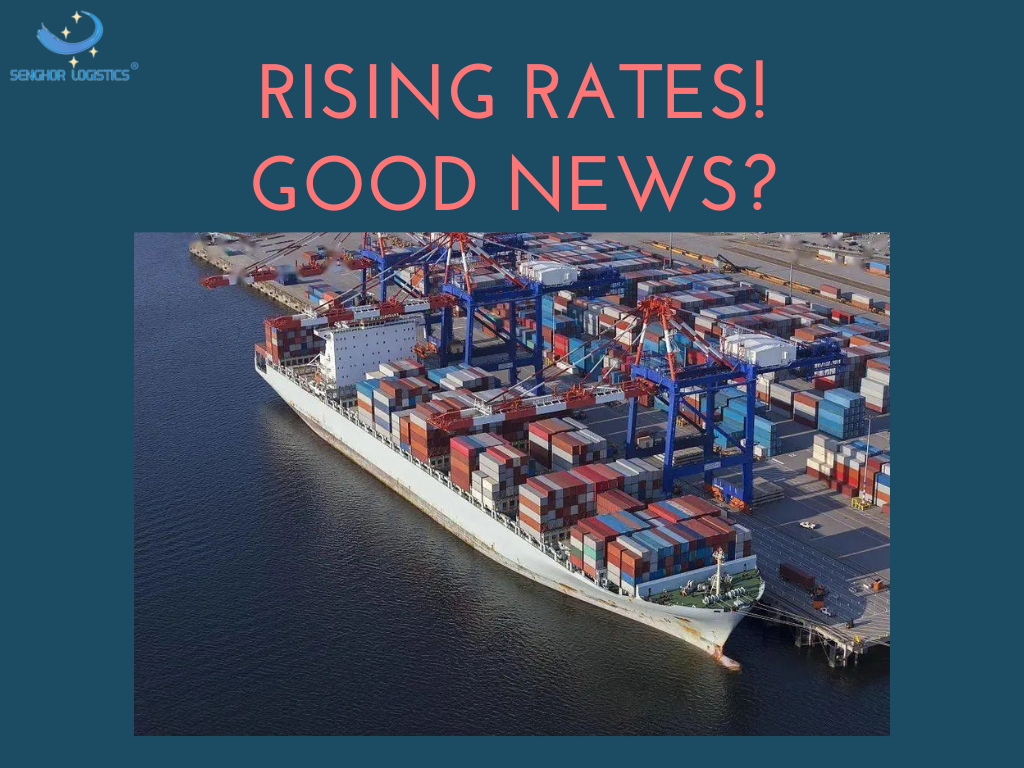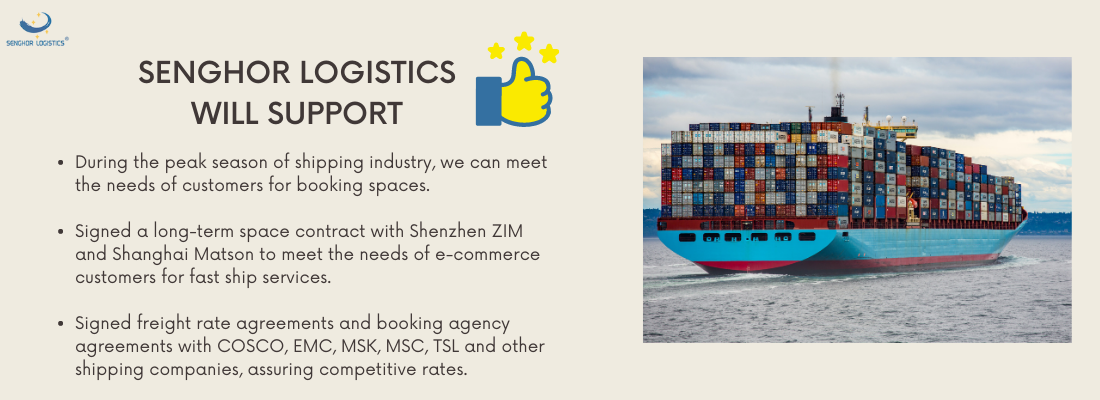The container shipping market, which has been falling all the way since last year, seems to have shown a significant improvement in March this year. In the past three weeks, container freight rates have risen continuously, and the Shanghai Containerized Freight Index (SCFI) has returned to the thousand-point mark for the first time in 10 weeks, and it has set the largest weekly increase in two years.
According to the latest data released by the Shanghai Shipping Exchange, the SCFI index continued to rise from 76.72 points to 1033.65 points last week, reaching the highest level since mid-January. The US East Line and US West Line continued to rebound sharply last week, but the freight rate of the European Line turned from rising to falling. At the same time, market news shows that some routes such as the US-Canada line and the Latin America line have suffered serious space shortage, and shipping companies may raise freight rates again starting in May.

Industry insiders pointed out that although the market performance in the second quarter has shown signs of improvement compared with the first quarter, the actual demand has not improved significantly, and some of the reasons are due to the peak period of early shipments brought about by the upcoming Labor Day holiday in China. Including the recent news that dock workers at ports in the west of the United States have slowed down their work. Although it did not affect the operation of the terminal, it also caused some cargo owners to actively ship. The current round of freight rate rebound on the US line and the adjustment of shipping capacity by container shipping companies may also be seen as shipping companies are trying their best to negotiate in order to stabilize the new one-year long-term contract price that will take effect in May.
It is understood that March to April is the time point for the negotiation of the long-term agreement on the container freight rate of the US line in the new year. But this year, with the spot freight rate sluggish, the negotiation between the cargo owner and the shipping company has a big difference. The shipping company tightened the supply and pushed up the spot freight rate, which became their insistence on not lowering the price. On April 15th, the shipping company confirmed the price increase of the US line one after another, and the price increase was around US$600 per FEU, which was the first time this year. This uptrend is mainly driven by seasonal shipments and urgent orders in the market. It remains to be seen whether it represents the beginning of a rebound in freight rates.
The WTO pointed out in the latest "Global Trade Outlook and Statistical Report" released on April 5: Affected by uncertainties such as the instability of the world situation, high inflation, tight monetary policy, and financial markets, the global commodity trade volume is expected to increase this year. The rate will remain below the 2.6 percent average over the past 12 years.
The WTO predicts that with the recovery of global GDP next year, the growth rate of global trade volume will rebound to 3.2% under optimistic circumstances, which is higher than the average level in the past. Moreover, the WTO is optimistic that the loosening of China's pandemic prevention policy will release consumer demand, promote trade activities, and increase global commodity trade.

Every time Senghor Logistics receives information about industry price changes, we will notify customers as soon as possible to help customers make shipping plans in advance to avoid temporary extra costs. Stable shipping space and affordable price are one of the reasons why customers choose us.
Post time: Apr-21-2023











